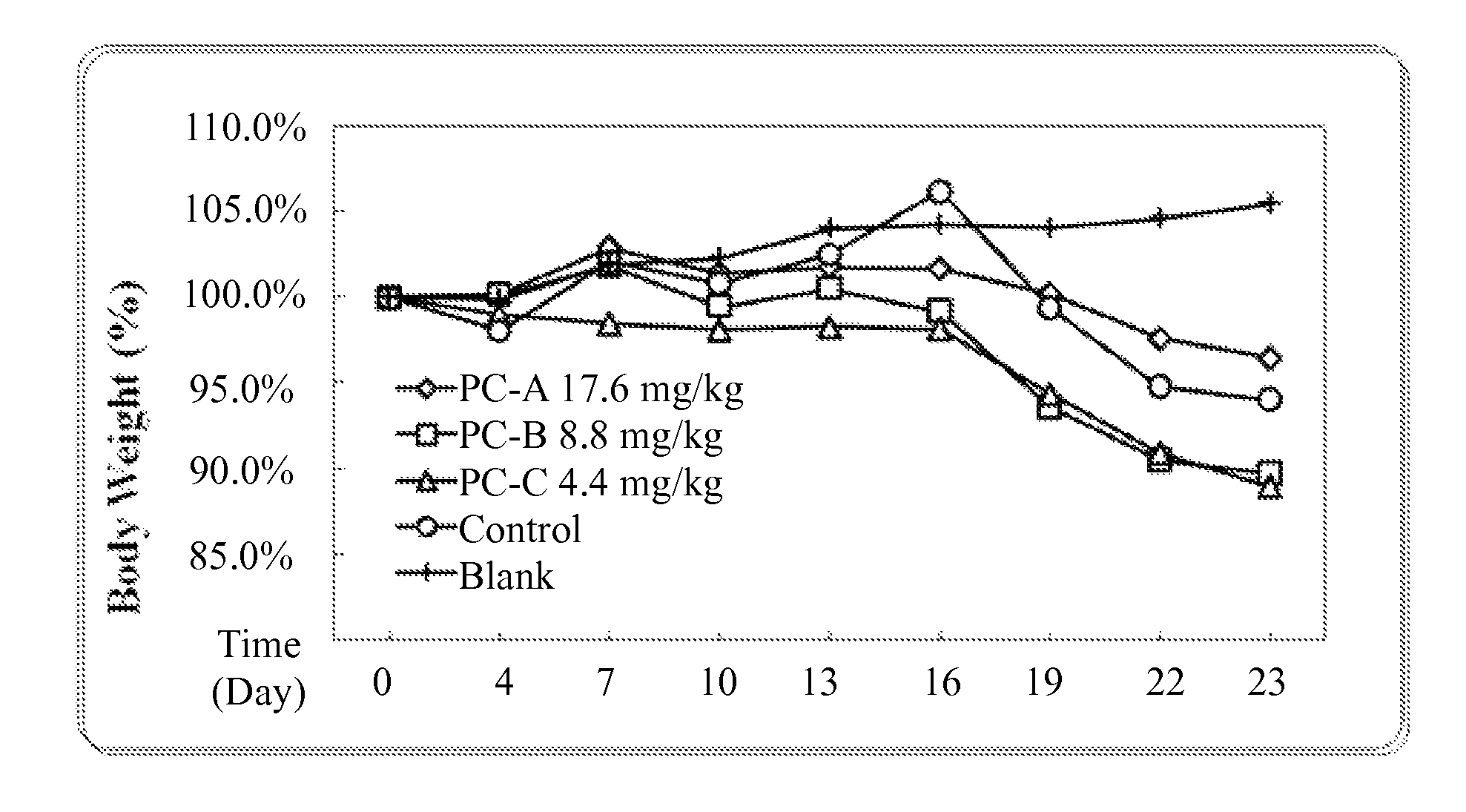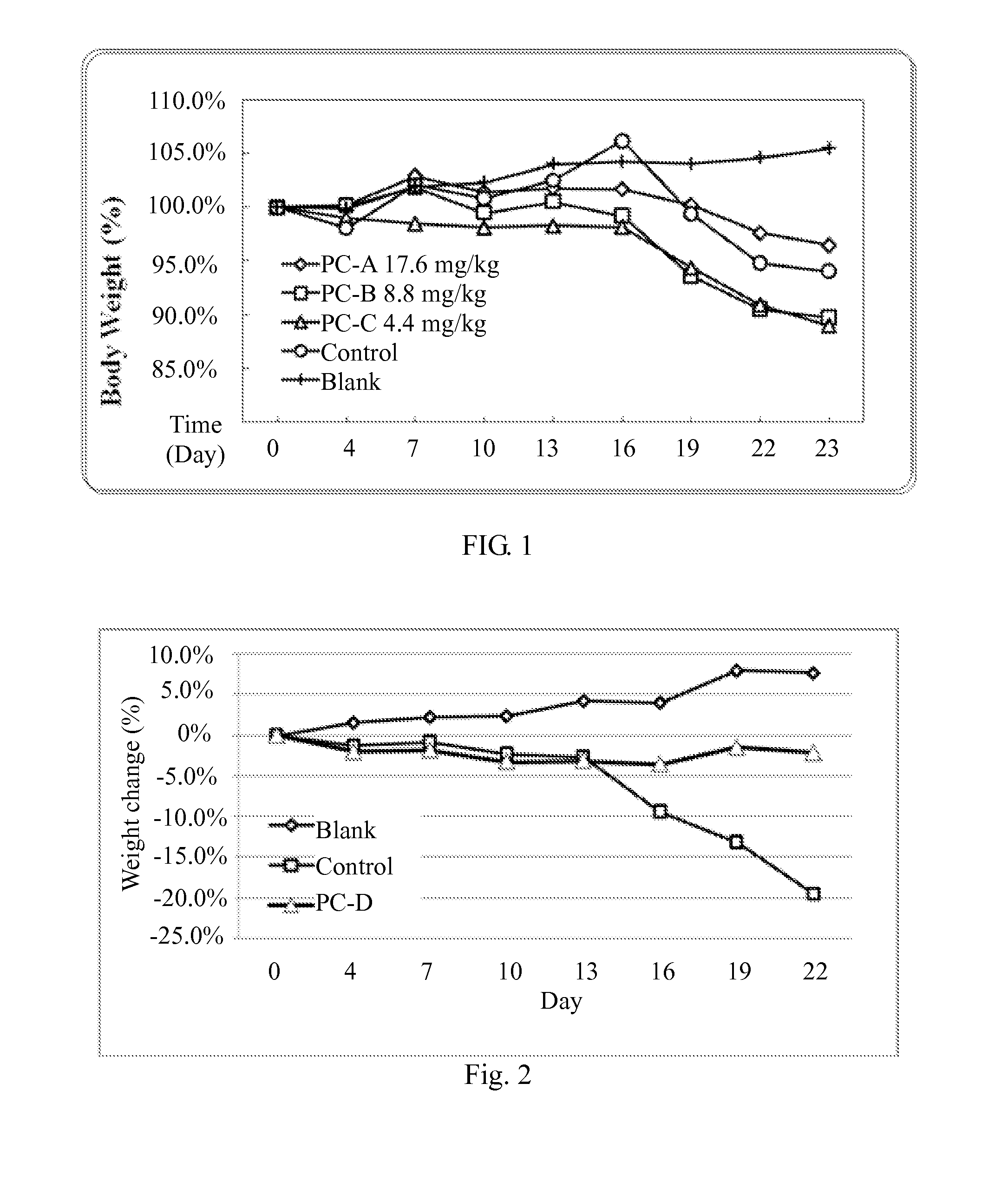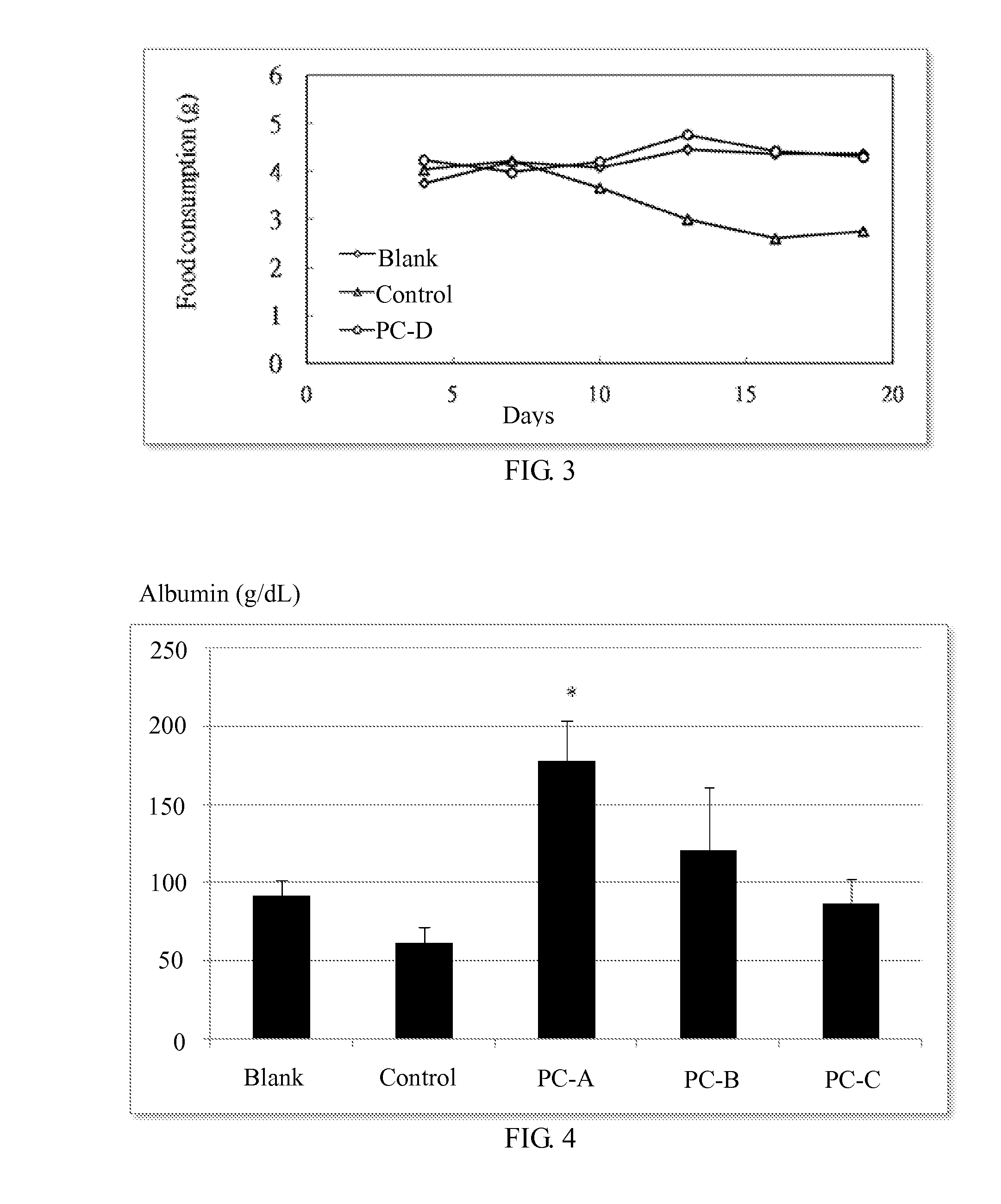Use of lanostane and Poria extract in treating cachexia
a technology of lanostane and extract, which is applied in the field of pharmaceutical compositions, can solve the problems of temporary increase of body weight, increase of body muscle, and inability to prevent or terminate the loss of patients' body weight, and achieve the effect of improving the wasting sta
- Summary
- Abstract
- Description
- Claims
- Application Information
AI Technical Summary
Benefits of technology
Problems solved by technology
Method used
Image
Examples
example 1
[0046]26 kg of Poria grown in Yunnan was extracted with 260 liters of 75% aqueous alcohol solution under heating. The extraction were repeated three times; the resulting three extraction solutions were combined and vacuum concentrated to yield an extract of 225.2 g. Quantitative analyses were subsequently carried out on the extract, which indicated that 76.27 mg of lanostanes could be found in every gram thereof, wherein K1 (pachymic acid) took up 33.4 mg; K1-1 (dehydropachymic acid) took up 9.59 mg; K2-1 (tumulosic acid) occupied 19.01 mg; K2-2 (dehydrotumulosic acid) occupied 6.75 mg; K3 (polyporenic acid C) occupied 5.06 mg, and K4 (3-epidehydrotumulosic acid) occupied 2.46 mg.
example 2
[0047]125 g of the alcohol extract from Example 1 was further extracted six times with 1.3 liters of dichloromethane; the resulting six extraction solutions were combined and concentrated to obtain an extract of 22.26 g. The dichloromethane extract were dissolved in heated 95% alcohol and left to cool, followed by filtering and discarding the insoluble substances. A small amount of water was added into the filtrate until the alcohol concentration reached 45% therein, which resulted in precipitation; from which a precipitate of 17.4 g was obtained by centrifugation consequently. Subsequent quantitative analyses on the precipitate indicated that each gram thereof comprised 264.78 mg of lanostanes, wherein K1-1 occupied 159.7 mg; K1-2 occupied 56.96 mg; K2-1 occupied 24.43 mg; K2-2 occupied 8.8 mg; K3 occupied 9.84 mg, and K4 occupied 5.05 mg. The method of thin layer chromatography (TLC) with silica gel was used to confirm the precipitate did not comprise any secolanostane.
example 3
[0048]100 kg of Poria was boiled with 800 kg of water for 3 hours, then left for cooling to 50° C. and a pH value thereof was adjusted to pH 11 by using a 5N NaOH solution, followed by stirring the resulted solution for 3 hours. A centrifugation machine was used to separate the liquid from the solid, followed by adding another 800 kg of water to the separated solids. The aforesaid procedures were repeated, including adjusting pH value with NaOH to pH 11, stirring, and removing the solids by centrifugation. The two resulting liquids were combined, and then vacuum concentrated to a solution of 100 kg at 50° C., followed by the adjustment of pH value to pH 6.5 by using 3N HCl so as to produce a precipitate. Said precipitate was separated from the solution, subsequently rinsed with 40 L H2O, and centrifuged in order to recover the precipitate; the precipitate was sprayed dry with 8 L of water, which yielded 380 g of powder. Afterwards, the powder was extracted three times by using 4 L o...
PUM
| Property | Measurement | Unit |
|---|---|---|
| weight loss | aaaaa | aaaaa |
| body weight | aaaaa | aaaaa |
| body weight | aaaaa | aaaaa |
Abstract
Description
Claims
Application Information
 Login to View More
Login to View More - R&D
- Intellectual Property
- Life Sciences
- Materials
- Tech Scout
- Unparalleled Data Quality
- Higher Quality Content
- 60% Fewer Hallucinations
Browse by: Latest US Patents, China's latest patents, Technical Efficacy Thesaurus, Application Domain, Technology Topic, Popular Technical Reports.
© 2025 PatSnap. All rights reserved.Legal|Privacy policy|Modern Slavery Act Transparency Statement|Sitemap|About US| Contact US: help@patsnap.com



